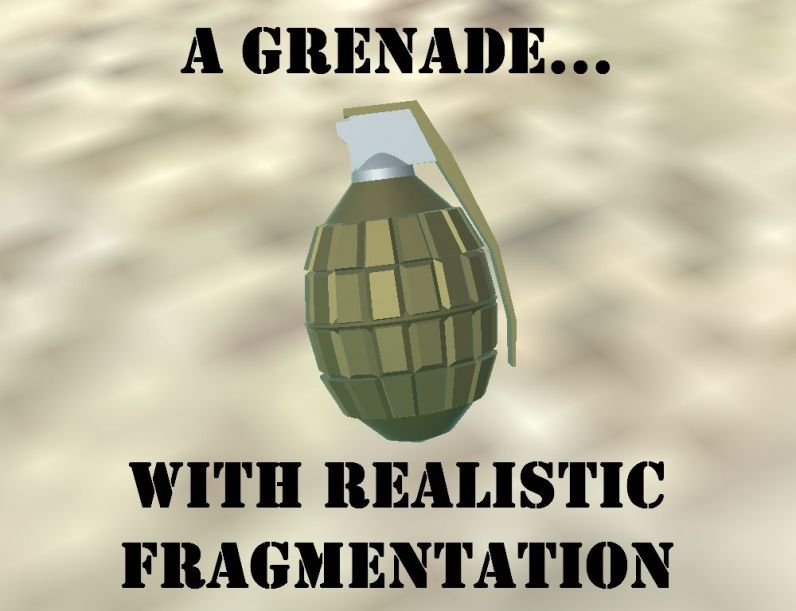
The Dutch V40, Swiss HG 85 and US M67, are offensive grenades as they have an effective wounding radius of around 15 m and can easily be thrown further. Mills bombs and the Soviet F1 are examples of defensive grenades. If this exceeds the distance at which a soldier can reasonably be expected to throw the grenade, he must do so from, or be able to get into, some form of cover.

Grenades are normally either offensive or defensive, depending on the effective casualty radius. When the word grenade is used without specification, and context does not suggest otherwise, it is generally assumed to refer to a fragmentation grenade. The outer casing and/or a fragmentation matrix consisting of notched wire, preformed fragments (spherical or otherwise,) provide the projectiles. The body may be made of hard plastic or steel. ( Discuss) Proposed since April 2013.Ī fragmentation grenade (commonly known as frag or frag grenade) is an anti-personnel weapon that is designed to disperse small projectiles or fragments on detonation. All major assaults required attacking troops to carry extra grenades to capture their objectives and then hold them against enemy counterattack.It has been suggested that this article be merged with ]. Essential by 1917īy 1917, all infantry carried grenades. The British and Canadians used egg-shaped hand grenades, which could be thrown about 30 metres (10 metres fewer than the German sticks), but carried a larger explosive charge. The Germans tended to prefer the stick bomb, which could be thrown farther but had a smaller explosive charge. Rifle grenadiers fired specifically modified grenades from rifles, while the infantry on both sides carried dozens of different types. As of Devblog 145 the F1 grenade is mainly antipersonnel, dealing. It can also stick to structures using Right-Click to break walls or doors, working as a alternative way to raid bases. It is effective as an anti-personnel weapon. The F1 Grenade will deal damage to anyone standing within a close proximity when it explodes.

Dozens of Types of Grenadesīy the end of 1915, all armies were being supplied with hand bombs. The F1 Grenade is a craftable explosive weapon that can be thrown. They often proved as dangerous to their makers as to their intended targets, due to the risk of premature explosion. Reinvented by the requirements of trench warfare, the first grenades in 1914 were often hand-made, consisting of old cans filled with nails and bits of metal.

Reinvented by the requirements of trench warfare, the first grenades in 1914 were often hand-made, consisting of old cans filled with nails and bits of metal and packed with gunpowder. These simple, hand-thrown weapons had been invented hundreds of years before, but had not been widely used since the Napoleonic era. In attempting to fight through enemy trenches, or to defend against attack, all armies came to rely heavily on grenades. In close quarters fighting, especially in trenches, it was also difficult to inflict casualties on the enemy without exposing one’s self in order to fire. The trench warfare of the Western Front resembled a siege, where enemy forces, shielded by trenches and fortifications, were difficult to see or to shoot with direct-fire weapons such as rifles.


 0 kommentar(er)
0 kommentar(er)
